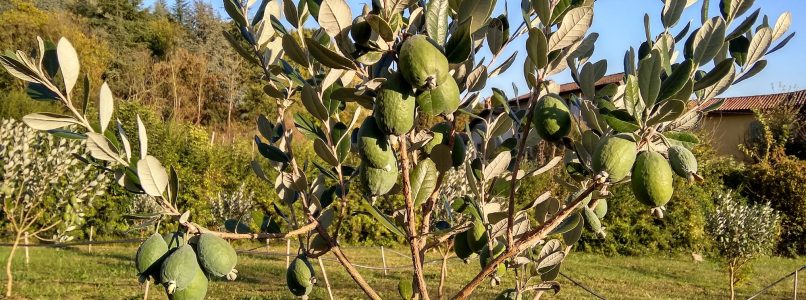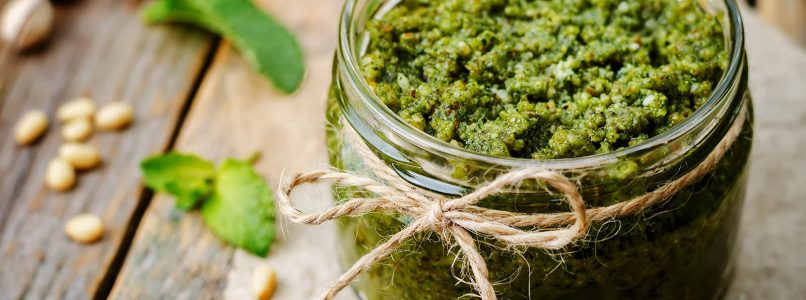Did you know that in reality only four fruits are of European origin? This is why Tropico dei Colli has started to cultivate some exotic varieties hitherto unknown in Italy
In the province of Bergamo there is a company, Tropico dei Colli, which is revolutionizing the world of exotic fruits in Italy. In fact, if many more fruits than we think are not originally European, why not try to grow other varieties as well, unthinkable until a few years ago? More or less this is how this very young company was born, which has also rightly won several awards for product innovation in the agri-food sector.
The birth of the company
Mirko Roberti was born in Osio, in the province of Bergamo, and from an early age he nurtured a visceral passion for plants and the world of nature in general. For years he devoted himself to the collection of some rare varieties, little known in Europe, but which according to his studies could have grown anyway. "I couldn't wait to taste the fruits I had planted, to hear how they came in a different territory". And from these first (successful) experiments, he understands what he wants to do in life: design parks and gardens using exotic plants, which are more resilient, need less treatment and have a beautiful bloom. So he enrolled in Environmental Architecture at the Politecnico di Milano and it was during these commuter trips that he met Giulia, a student of Agriculture, who did the same route to go to university. The two immediately discover that they have so many things in common that in a short time they decide to try to grow exotic fruits and open a business together: this is how Tropico Dei Colli was born. «In the end I didn't even finish my studies, Mirko says, «because I threw myself headlong into this thing. The starting point of everything was the discovery that to have aEuropean origin are actually few fruits, like plums, cherries, chestnuts and some small fruits such as currants, raspberries and blackberries (although there are conflicting opinions on the subject). So if other fruits are not originally European, but are now part of our diet, and above all culture, why not be pioneers and start growing other varieties in Italy too? After various studies and attempts, they identify some fruits that they grow in places where the climate is very similar to ours. And in 2015 they plant their first exotic fruits on an area of about two hectares on the hills of Bergamo, without using any treatment. Because, in the end, these fruits considered exotic end up being more sustainable than many considered local that we usually consume, but which in reality undergo continuous treatments, with a negative impact on the environment.
The exotic fruits of the Tropic of the Hills
The exotic fruits planted by the Tropic of the Hills are mainly three. One is there feijoa, the national fruit of New Zealand, also widespread in Georgia and Azerbaijan, as well as in South America, on the mountain highlands of Brazil, Uruguay and Argentina. Yet Mirko had also noticed its presence on Lake Garda and in Tuscany, because, he explains, "it grows where the olive tree grows, with the need for a citrus fruit, so it is perfect for our territory". It is a very fragrant fruit, somewhat reminiscent of lime and lemon, perfect for cocktails, ice creams and sorbets. Then there is the red witty kiwi, called mini-kiwi, which is found in the Far East, particularly in Korea and northern China. It has a red skin that indicates ripeness, so it's easy to tell when it's time to start harvesting, usually between late August and September. Moreover, its skin is so smooth and thin that it can be eaten, in fact it is also called «the kiwi that does not peel; the pulp inside, sweet and juicy, is somewhat reminiscent of cherry. And finally theasimin, which is harvested in the same period, when it is very creamy and can be eaten by the spoon when it is fully ripe. It is a small tree that originates in the United States, specifically on the Mississippi basin, where they are currently rediscovering it there as well. But it doesn't stop there: «We are working on a production of siberian blueberry, different from the classic one, but with good potential due to the high quantity of concentrated vitamins. It also has a very intense flavor, somewhat reminiscent of a set of wild fruits, a real explosion of aromas in the mouth ". And the reason for the success of these fruits is precisely this: in addition to being produced locally in a sustainable way, they are first and foremost new tastes, good to eat.
Where, when and how to find them
These fruits can now also be found in other regions, because over time an increasing number of farms have begun to get information, follow in their footsteps and cultivate these fruits. Thus, within a few years, Mirko and Giulia understood that the union would be their strength and made Tropico dei Colli a national brand, to which it is possible to join, so much so that today they have a network of about fifty reality between Lombardy, Piedmont, Veneto is Emilia Romagna. As "mother company" Tropico dei Colli, they take care of following the management of the plant step by step, choosing together the most suitable fruits for the type of soil, the territory and the climate, providing everything necessary up to the organization of the harvest and upon collection of the goods. The important thing, Mirko emphasizes, is that they continue to be faithful to the original philosophy, i.e. to cultivate (in Italy) small plots of exotic fruits, without treatments that have a negative impact on the environment and are therefore as organic as possible. Furthermore, Mirko continues, «our products are found only and exclusively in the period of maturation, which goes from September to December, because it is essential to eat seasonal fruit . In the right period, therefore, you can find them both online and in various markets, just follow them on the various social pages to find out where they are. But in reality there are some news: Mirko is carrying out an innovation in the company with the creation of an extremely advanced data system, which will make the whole network of the Tropico dei Colli more united and connected, both in management and in that which continues to be the intent, that is to produce organic exotic fruits in Italy.




